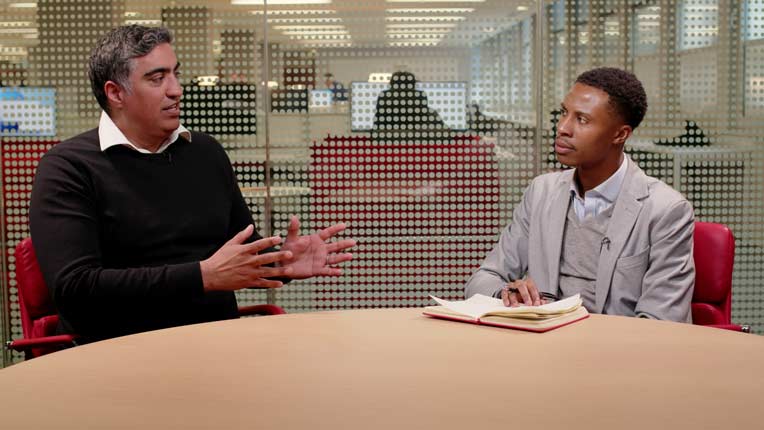Read more from Morningstar's Managing Risk Week here.The below article first appeared on Morningstar.com, a sister site of Morningstar.co.uk, in June 2010.
Ross Levin is the founding principal and president of Accredited Investors, a fee-only financial-planning company located in Minnasota, U.S. He answered our questions on using a bucket approach, coaching clients who are inclined to play it too safe, and risks that are underdiscussed and/or underrecognised in the current environment. He also discusses concerns regarding a rising-rate environment and protection against macroeconomic risks.
What risks do investors face that you think are underdiscussed and/or underrecognised?
There are several risks that are a part of investing and every day life. While most people focus on volatility, there are other more subtle and arguably more important risks.
The risk of inflation--The purpose of investing is to ultimately either spend or give your money away at some future date. Therefore, what your money can buy you at that later date is critical to understand. Inflation is like salt on a car--it gradually erodes your spending power year in, year out. The effects are hardly felt immediately, but over time the impact is significant.
But don't be fooled by the consumer price index. You have your own personal inflation rate. Certain costs will increase faster than others. For example, since the deregulation of the airline industry, travel costs have fallen during the last couple of decades. The likelihood of that continuing, given the mergers that have taken place in the business, is slim. If you travel a bit, your personal inflation rate will be much higher than a homebody.
The risk of outliving your assets--Some clients say that they want a portfolio that will be a last-breath, last-dollar portfolio. But that is not realistic. It is virtually impossible to know how long that you will live, so you need to develop assets in a number of areas that can keep on going as long as you can. Social security is an example of this, as are pensions. A well-reasoned spending policy for your investment portfolio that provides appropriate safeguards in various market environments also will provide you with protection from too little money too late in life.
The risk of not enjoying your assets--Just like having too little money late in life can be an issue, so can having too much money. Many of our clients who have been so responsible in building their portfolios throughout their working days have a terrible time spending those dollars when they retire. How sad. Clinging tightly to your money and letting it slip mindlessly through your hands are actually two sides of the same coin. Finding the golden mean is the key to successful financial planning.
The risk of big-cost items--Insurance should only be for the things that you don't feel that you can pay for on your own. You should have high deductibles on your property-casualty because you can probably afford the inconvenience of minor property damage but can't afford to replace your house if it burns down. The same thinking should be for things like long-term care insurance, disability insurance, and life insurance. Don't skimp on them nor use these products as investments; use them as a way to protect against the things that you can't cover on your own.
The risk of not living the life you wanted--Too many people focus on the little stuff and forget the big things. They may be obsessed with fees that they are paying and ignore whether they could spend their money on improving their lives in some way. I use my childhood as an example. My mother would trudge into our dark, damp basement to do laundry for the 20-some years my parents owned their house. When they were getting to sell it, they completely redid the laundry area. Why spend that money for someone whom doesn't even matter to you?
The risk of tying money up--Too many people are enamored with things that they can't get their money out of when they want to; hedge funds come to mind. While these may be appropriate, the key piece is that if someone is going to take your money for a long period of time because of lock-ups or simply the type of investment, you better be compensated for it. Generally speaking, you aren't. You can create your own portfolio using exchange-traded funds and open-ended mutual funds that can do many of the things that hedge funds do, without the high fees or lack of liquidity.
Are you concerned about the risks of a rising-interest-rate environment? If not, why not? If so, would you take any steps to hedge client portfolios?
I wouldn't say that I am concerned about a rising-interest-rate environment, but I expect one. There are many things that we have been doing in consideration of this. First, we have had almost all of our clients refinance their mortgages to fixed rates or adjustable rates that coincide with the length of time that they expect to live in their homes. Second, we have generally kept our bond maturities shorter or use bond funds with highly respected managers who make that call for us. Third, we have moved some money into areas that we think may do better in a rising-interest-rate environment such as emerging-markets infrastructure, small amounts of Treasury Inflation-Protected Securities, and commodities.
A rising-interest-rate environment is not all bad. We will finally get paid for the money that we have in cash. It generally means that the economy is going to be more robust (though we believe that initially interest rates will rise before hiring improves). We also think interest rates will rise before inflation kicks in.
How do you coach clients who are inclined to play it too safe--who would rather settle for small but certain gains versus losing money by investing in the market?
The calculus for most clients really comes down to this: How much risk do they need for the amount of money needed to live the life that they want to live? We have clients with a lot of money who do not feel that they want to leave much to their heirs. Once we solve for their charitable intentions, they simply don't need to take on as much risk as someone with a similar amount of money but different objectives. This is not the situation for most investors.
We do a lot of modeling for our clients using a wide range of assumptions. We spend a lot of time coaching and talking to our clients about what is realistic for them. It really comes down to eating well versus sleeping well. Remember, any act of saving is an act of deprivation--you are denying yourself something certain today to help you have something in an uncertain future.
This also makes saving an act of faith. Most people tend to not want to be all-in or all-out, so we can modify things that leave them emotionally comfortable and financially secure. But there are some people who don't want to accept any risk of volatility. They need to save a heckuva lot of money because they should only be invested in government-backed instruments which are not going to pay very much.
To what extent do you alter client portfolios to protect against big macroeconomic risks--that is, to what extent would you use tactical allocation in client portfolios? Do you get pressure from clients to employ more of a tactical approach?
One of the most misunderstood areas for the general public is how investment advisors actually manage portfolios. Our fundamental philosophy is mean reversion; things that have done well in the past will not do as well in the future. The best picture of this is the "Periodic Table of Investment Returns" that Callan publishes.
We set up a strategic allocation between stocks, bonds, cash, and alternatives. Once that allocation is established, we overweight or underweight certain areas based on valuations. For example, earlier this year we began to overweight bonds and alternatives and underweight equities. We don't completely exit broad asset classes because of the chance that we are wrong. But within asset classes, we also make tactical changes. For example, in 2009 we used bonds offensively--junk bonds, foreign-currency bonds, and so on. In 2010, we are much more defensive. While our overall bond position may be close to the same, its makeup is dramatically different.
We are also at the low-end of our international stocks and small stocks and at the high end of our large-cap stocks. It seems silly to simply set up a strategic allocation and stick to it regardless of valuations. Should you own as many equities if they are trading at 20 times earnings as when they are trading at 12?
We also establish seven-year expected real returns. We use a combination of historical numbers and prospective numbers to determine how we think portfolios will perform. In the beginning of 2009, we thought that we would return (during a seven-year period) more than 7% above inflation. After a huge year, we began 2010 with an expectation of slightly more than 4% above inflation. If we have lower expected future returns, we would adjust the risk in the portfolio accordingly.
A lot of advisers have adopted the "bucket" approach as a means of helping clients deal with the day-to-day fluctuations in their long-term assets. Do you use a bucket approach? If so, how does it work?
The key to successful investing is to not have clients bail out at the worst possible times. We use a bucket approach as a way to incorporate the very real aspects of behavioral finance with how clients view their money. There are a number of ways that planners can incorporate this. The way we do it is that when clients have income needs from their portfolio, we initially set aside three years and place their assets in cash or short-term bonds. As the clients spend their money, if the market has done well, we raise more cash; if the market has performed poorly, we let the three years drop to two years.
We also show clients three actual buckets--one for lifestyle/income, one for growth, and one for legacy. The lifestyle bucket will have cash and bonds. We overlay their spending requirements and risk tolerance with this. For a client with lower risk tolerance, we may have seven to 10 years worth of spending in cash and bonds. If clients are living off of 5% of their portfolios, that means that 35%-50% of their portfolios are in the lifestyle bucket. The more that is in this bucket, the less that they can spend and the less that they can have in the legacy bucket.
We have created spending policies that are based on what percentage of their current portfolios they would like to leave to someone. Obviously, the higher amount of their portfolios that they wish to preserve, the less they can spend. We also factor in when other assets may be coming into the portfolio. Things like an inheritance or the sale of a second property are often ignored but give a jolt to the portfolio.






















